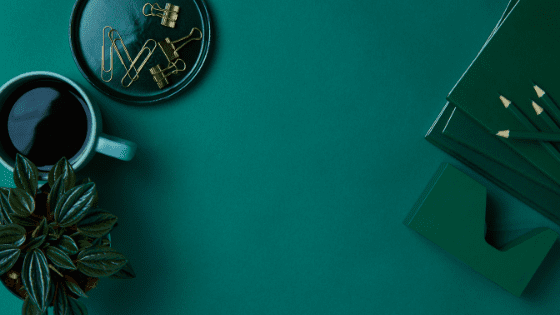The Golden age :
Traditional Indian writings on bows and arrows specifically and combative technique when all is said in done are known as Dhanurveda. A few works of art of the class date from this period.
1.Satavahana administration :
Indian ship on lead coin of Vasisthiputra Sri Pulamavi, confirmation to the marine and maritime capacities of the Satavahanas amid the 1st–2nd century CE.
As per a few elucidations of the Puranas, the Satavahana family had a place with the Andhra-jati (“tribe”) and was the primary Deccanese line to manufacture a domain in daksinapatha (southern district). The Satavahanas (likewise called Andhra and Shalivahan) rose to control in cutting edge Telangana, Andhra Pradesh and Maharashtra around 200 BCE and stayed in force for around 400 years. Henüz Gelişen ve büyüyen nüfusuyla beylikdüzü escort kadınlarına elbette yer vereceğiz web sayfamızda. Practically the entire of present-day Telangana, Maharashtra, Madhya Pradesh, Chhattisgarh, Odisha, Goa, Karnataka, and Andhra Pradesh went under Satavahana guideline. Their first capital was Koti Lingala, and also Paithan, then called Pratishthan.
Simuka, the line’s organizer, vanquished Maharashtra, Malwa and some portion of Madhya Pradesh. His successor and sibling Kanha (or Krishna) further extended his kingdom toward the west and the south. He was succeeded by Satakarni I, who vanquished the Shunga administration of North India. His successor, Gautamiputra Satakarni, crushed the attacking Indo-Scythians, Indo-Parthians and Indo-Greeks. His realm stretched out up to Banavasi in the south, and included Maharashtra, Konkan, Saurashtra, Malwa, west Rajasthan and Vidharbha. Later, Satavahana rulers lost some of these regions. Satavahana power restored quickly under Yajna Sri Satakarni however declined after his demise.
2.Mahameghavahana administration :
The Mahameghavahana administration was an antiquated controlling tradition of Kalinga after the decrease of the Mauryan Empire. The third leader of the line, Khārabēḷa, vanquished a lot of India in a progression of crusades toward the start of the regular era.[2] Kaḷingan military may was restored by Khārabēḷa. Under Khārabēḷa’s generalship, the Kaḷinga state had an imposing oceanic range with exchange courses connecting it to the then-Simhala (Sri Lanka), Burma (Myanmar), Siam (Thailand), Vietnam, Kamboja (Cambodia), Borneo, Bali, Samudra (Sumatra) and Yawadvipa (Java). Khārabēḷa drove numerous fruitful battles against conditions of Magadha, Anga, Satavahanas and the South Indian areas of Pandyan Empire (cutting edge Andhra Pradesh) and extended Kaḷinga to the extent the Ganges and the Kaveri.
The Kharavelan state had an imposing oceanic domain with exchanging courses connecting it to Sri Lanka, Burma, Thailand, Vietnam, Cambodia, Borneo, Bali, Sumatra and Java. Homesteaders from Kalinga settled in Sri Lanka, Burma, and also the Maldives and Maritime Southeast Asia. Indeed, even today Indians are alluded to as Keling in Malaysia on account of this.[3]
The fundamental wellspring of data about Khārabeḷa is his acclaimed seventeen line rock-cut Hātigumphā engraving in a collapse the Udayagiri slopes close Bhubaneswar, Odisha. As indicated by the engraving, he assaulted Rajagriha in Magadha, hence crushing the Indo-Greek lord Demetrius I of Bactria to withdraw to Mathura.[6]
3.Gupta administration :
The iron mainstay of Delhi, raised by Chandragupta II the Great after he crushed the Vahilakas.
Siva-Dhanur-veda talks about the military of the Gupta Empire. The Guptas depended intensely on defensively covered war elephants; steeds were utilized little if by any stretch of the imagination. The utilization of chariots had declined vigorously when of the Guptas, as they had not demonstrated exceptionally helpful against the Greeks, Scythians, and different trespassers. Guptas used overwhelming mounted force clad in mail protective layer and furnished with maces and spears, who might have utilized stun activity to break the adversary line. They likewise utilized on infantry bowmen. Their longbow was made out of bamboo or metal and terminated a long bamboo stick bolt with a metal head; iron shafts were utilized against defensively covered elephants. They additionally here and there utilized flame bolts. Toxophilite were every now and again ensured by infantry furnished with shields, spears, and longswords. The Guptas additionally kept up a naval force, permitting them to control local waters.
Samudragupta grabbed the kingdoms of Shichchhatra and Padmavati at a very early stage in his rule. Later, he took the Kota kingdom and assaulted the tribes in Malvas, the Yaudheyas, the Arjunayanas, the Maduras and the Abhiras. He additionally enslaved the remants of the Kushan Empire. By his demise in 380, he had vanquished more than twenty kingdoms.
fourth century CE Sanskrit artist Kalidasa, credits Chandragupta II with having vanquished around twenty one kingdoms, both in and outside India. In the wake of completing his battle in the East and West India, he continued northwards, enslaved the Parasikas,[citation needed] then the Hunas and the Kambojas tribes situated in the west and east Oxus valleys respectively.[citation needed] Chandragupta II controlled the entire of the Indian subcontinent; the Gupta realm was the most intense domain on the planet amid his rule, during an era when the Roman Empire in the west was in decay.
Skandagupta confronted with attacking Indo-Hephthalites or White Huns, from the northwest. Skandagupta had warred against the Huns amid the rule of his dad, and was commended all through the realm as an incredible warrior. He squashed the Huns attack in 455, and figured out how to keep them under control; be that as it may, the cost of the wars depleted the domain’s assets and added to its decrease
I’m Nitesh Brithwal Nanu , An Indian Engineer who is passionate about technology , current affairs , general Knowledge & programming . Constantly learning and experiencing new things.


![[PDF] Download for Indian History General knowledge](https://www.gkwala.com/wp-content/uploads/2022/02/PDF-Download-for-Indian-History-General-knowledge.png)


Comments